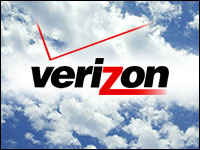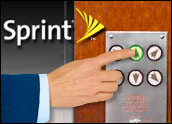
Why is Verizon Wireless telling half-truths in its latest advertising campaign? It does make the company look better than its competitors, but here’s the problem: When customers realize what they’re led to believe is only a half-truth, they will be very upset with Verizon.
So why risk that damage to the brand and the customer relationship?
My Pick of the Week is the debut of Windows 8 and the Surface tablet, which could become Microsoft’s next big hurrah if done right. Congratulations, Microsoft.
A Question of Trust
Verizon is not lying. Still, it is telling only half the truth, and the result leads customers to believe something that isn’t true. Verizon is trying to make customers think it offers better and faster service. The problem is 4G LTE is different, but not better. So it’s not true.
In fact, if customers knew the whole truth, Verizon’s ads would have no selling power. Instead, they would hurt Verizon because they would destroy the trust the company has built over the years.
I am talking about Verizon’s latest ad campaign, which has a small group of people looking at graphs in order to decide which carrier has the best 4G LTE coverage.
The TV commercial ends with… Verizon, which is shown as having the best 4G LTE coverage — better than all the other carriers combined.The half of that that’s true is also meaningless.Customers want speed. They don’t care how a carrier provides it. Different networks can use different technologies to achieve the same goal.
Customers don’t think one is better than the other. Customers don’t really care what a technology is called. They want performance — and Verizon is not the only carrier to offer performance.However, the way Verizon asks the question, it sounds as though 4G LTE is the only way, and that’s the problem. It is misleading a marketplace that doesn’t know any better.
It may be true that Verizon offers more 4G LTE coverage. However, it is also true that it does not matter.All that matters is speed, and other carriers — like AT&T, for example — also offer speed using a combination of technologies like 4G LTE and HSPA+.
In the TV commercials, Verizon seems to win based on how the question is asked. However, when the whole story is known, both Verizon and AT&T look very similar, with faster service. In fact, AT&T claims its fast network is accessible in more locations. Verizon says the same thing. So what is the customer to believe?
Keep It Real
From the customer’s perspective, what really matters is which network offers the fastest service where you spend the most time.The bottom line is, if the network you use has been updated where you spend time, you will have the highest speed. If not, you won’t. Period.
No carrier offers high-speed to all customers in all locations. The industry is undergoing a multi-year upgrade. So if speed matters to you, then you must find the network that is the fastest where you spend time.You can’t get that information from a television commercial. You can’t get it from a newspaper, magazine, Web or radio advertisement. You can only get that by testing for yourself.
Even inside each market there are strengths and weaknesses, and only a real test by a real customer will tell the truth.Each carrier has different standards and speeds, depending on where you are standing in their network. Standing across the street can mean the difference between a 3G and 4G signal.
So don’t choose based on an ad. Choose based on the service you get where you spend your time.
Verizon television ads confuse the situation. They show a chart illustrating how much 4G LTE coverage each carrier offers. It compares Verizon, AT&T and Sprint. However it only looks at 4G LTE. It does not show other technologies like HPSA+.
Advertising half the truth is no way to teach the customer. Rather, it’s a way to fool the customer.I know Verizon. I like Verizon. But I think Verizon is going down the wrong path. It is playing with fire, and it will get burned.I hope it recognizes what it is doing and corrects things before it’s too late.
Sprint Nextel is a different story. It is falling behind in the race to bring high-speed wireless networks to its customers. But Sprint will catch up some day.
However, both AT&T and Verizon offer fast speed and excellent quality wireless data service in an increasing number of places.
They are both rapidly updating their networks to 4G. They are just using different technologies to do so.
I truly hope Verizon stops this before it ruins its reputation in the marketplace. and Surface tablet. A hearty congratulations to Microsoft on what could become its next big hurrah — if done right.
I’ll be writing more about this in an upcoming column, but this is a big and new step for Microsoft. Will it be successful? The answer is both yes and no. How much it wins and how much it loses depends on what it does next.This is a very innovative new technology that will be the core operating system powering Microsoft’s new adventure in the world of PCs, tablets, smartphones and the cloud.
It has the potential to win big in this new cloud competition with Apple, Google and others.The problem is, it is going to force every customer to make this switch — even customers who would rather not do so. Many customers want to switch, but most would prefer to stay put if given the choice.Going forward, Microsoft should promote and support both its standard Windows and this new Windows 8, and let customers make the choice.
This type of drastic change can be successful when rolled out over time. Let customers have the choice to stay put or venture into the new. Over time, more customers will take the leap. However, forcing customers to do something they don’t feel comfortable doing is a sure way of losing business.
I have several suggestions that could help if they are open to listening. I’ll spell them out in an upcoming column. For now, let me just say congratulations, Microsoft. I hope this is as successful as it can be.

























































"The problem is 4G LTE is different, but not better."
4G LTE is way better than HSPA+, sorry. HSPA+ is technically 4G ("rules" were modified to let AT&T and others call it 4G), but LTE is closer to real 4G than HSPA+. (LTE Advanced is the start of ‘real’ 4G). You’ve been had by the oldest trick in marketing.
The data is handled different enough between them at the physical level that LTE is several times quicker than HSPA+.
easy to digest article:
http://articles.businessinsider.com/2012-03-30/tech/31258646_1_at-t-s-4g-lte-network-lte-4g
Sorry.
Exactly, 4G-LTE is a lot better simply because it’s closer to actual 4G than the other technologies. If it weren’t so good, why would AT&T be busting their butt to build an LTE network, eh Jeff?
I think their ad is more honest than AT&T’s where they say they have the largest 4G network. They should be saying they have the Largest Obsolete 4G Network.
And don’t even get me started on T-Mobile calling their network 4G. One day it’s 3G and the next it’s 4G. Yeah, right…